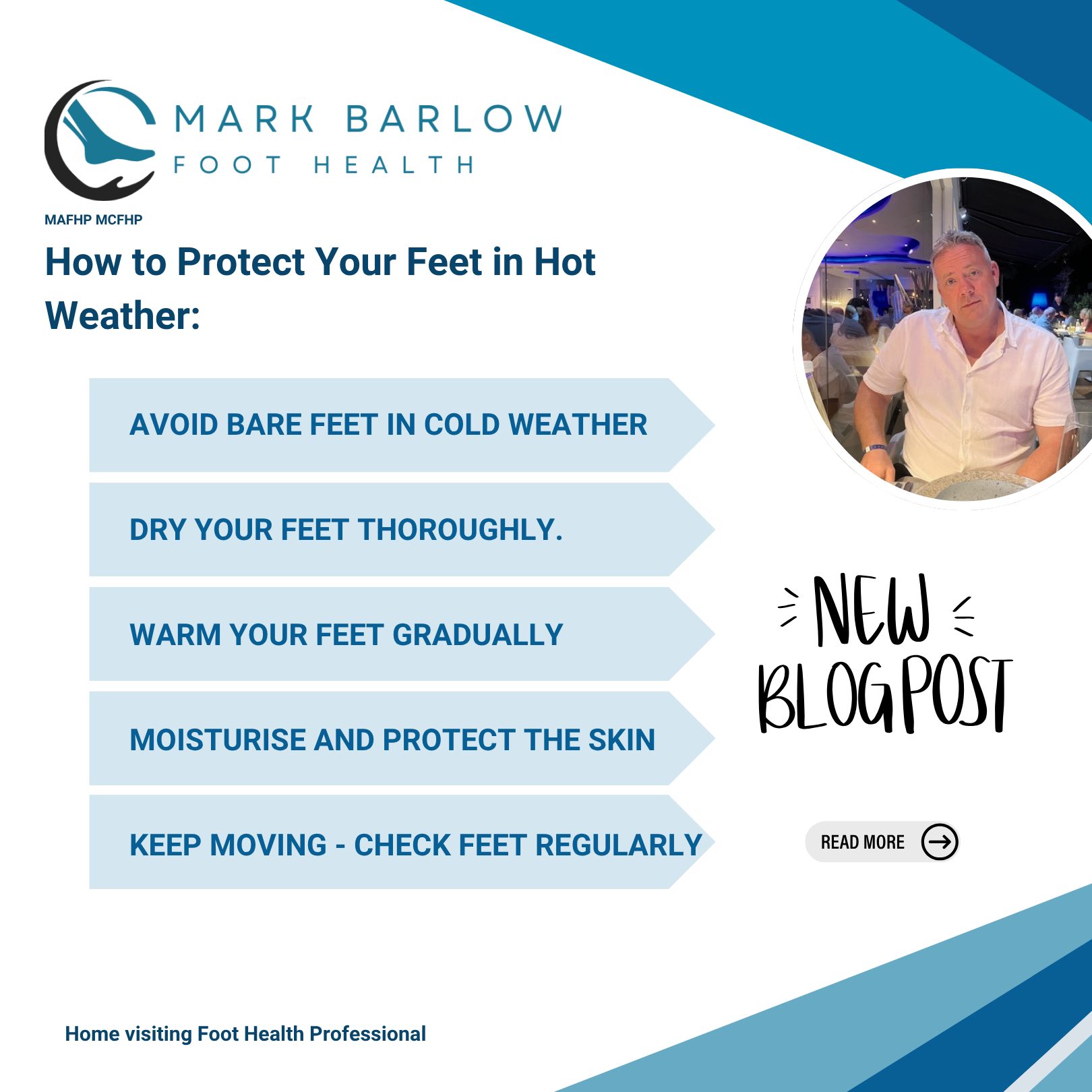Foot Treatments
We provide a range of foot health treatments all in the comfort of your own home
Diabetic Foot Care
Diabetic Foot Care is an essential aspect of managing diabetes. High blood sugar levels can cause nerve damage and poor circulation, leading to foot problems. It is estimated that up to one-third of people with diabetes will develop a foot ulcer at some point in their lives, and these ulcers can lead to serious complications such as infections and even amputations.
Proper foot care can help prevent these complications. It is important to inspect your feet daily for any cuts, blisters, or sores and to keep your feet clean and dry. Wearing well-fitting shoes and socks can also reduce the risk of developing foot problems. Regular visits to a healthcare professional for foot examinations and proper nail trimming can also help keep your feet healthy. If you do develop a foot ulcer, it is crucial to seek medical attention promptly to prevent further complications. By taking care of your feet, you can prevent serious problems and maintain your overall health and well-being.
Corn and Callus Removal
Corn and callus removal is one of the most common treatments offered by a Foot Health Practitioner. Corns and calluses are thickened areas of skin that form on the feet in response to pressure or friction. While they may not be painful at first, over time they can become uncomfortable and even painful, especially when walking or standing for long periods of time.
In the comfort of your home, I offer a range of treatments for corn and callus removal, including shaving and debriding the affected area. As an experienced Foot Health Practitioner, I will assess your condition and recommend the most appropriate treatment to help alleviate your discomfort and improve your foot health.
Verruca
Verruca is a viral infection that affects the sole of the foot. It is a common condition that can cause discomfort and pain if left untreated.
As an experienced Foot Health Practitioner and I will assess your Verruca and provide you with the best course of treatment. Contact me today to book an appointment and get started on your journey to healthy feet.
Fungal Nail and Thickened Nail Treatment
Fungal Nail and Thickened Nail Treatments are two of the most common issues that people seek help from Foot Health Practitioner. Fungal nail infections can cause discoloration, thickening and crumbling of nails. This condition can be very uncomfortable and unsightly, and without proper treatment, it can spread to other nails. As a Foot Health Practitioner I am trained to diagnose and treat fungal nail infections using effective methods, including topical and oral antifungal medications.
Thickened nails are often caused by trauma or injury to the toenail. They can also occur as a result of ageing or underlying medical conditions such as psoriasis and diabetes. Thickened nails can make it difficult to cut and maintain proper hygiene, and they can be painful when pressure is applied. A Foot Health Practitioner can help alleviate these symptoms by properly trimming and filing the nails and providing advice on proper footwear and foot care. In some cases, orthotics or other medical interventions may be necessary to correct underlying conditions that contribute to thickened nails.







